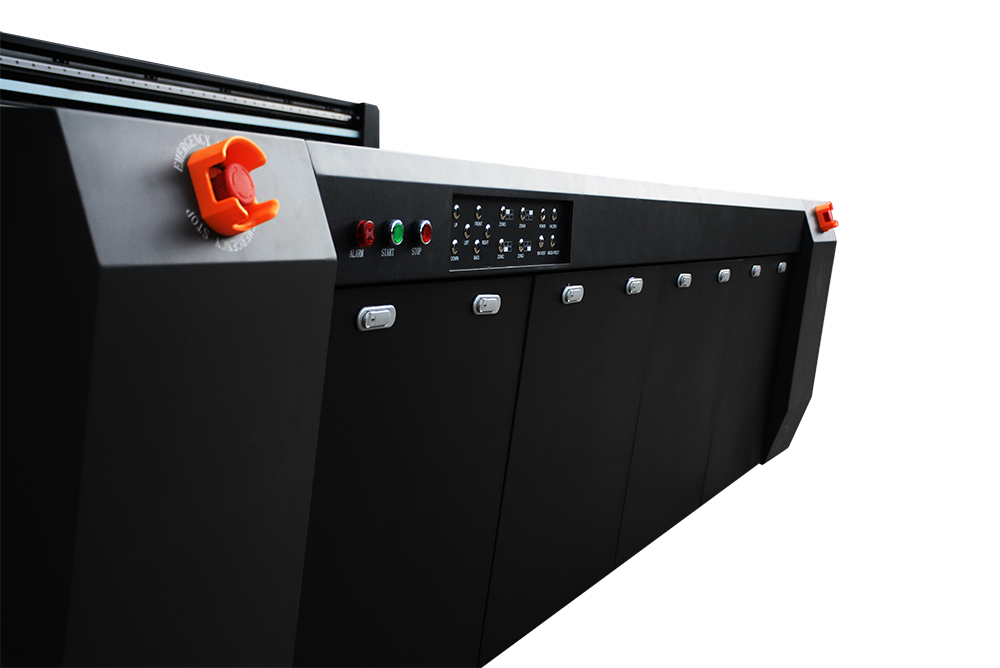UV Flatbed Printer: The Benefits of White Ink Printing
UV Flatbed Printer: The Benefits of White Ink Printing
In the realm of digital printing, UV flatbed printers have emerged as a game-changer, revolutionizing the way images and designs are transferred onto various surfaces. Among the numerous advancements in this technology, the incorporation of white ink printing stands out as a significant milestone. This article delves into the benefits of white ink printing on UV flatbed printers, exploring how it enhances versatility, aesthetics, and overall print quality.

1. Introduction to UV Flatbed Printers
UV flatbed printers are versatile machines capable of printing directly onto a wide range of materials, including glass, metal, plastic, wood, and even textiles. Unlike traditional inkjet printers, UV flatbed printers utilize ultraviolet (UV) light to cure the ink instantly after it is deposited onto the substrate. This process ensures rapid drying, minimal ink bleeding, and excellent adhesion, making it ideal for high-quality, durable prints.
2. The Role of White Ink in UV Printing
White ink printing is a unique feature of many advanced UV flatbed printers. Traditionally, printers relied on the substrate’s base color for print visibility. However, white ink printing allows for the creation of vibrant, opaque images on transparent or dark-colored materials, significantly broadening the scope of printable surfaces and design possibilities.
3. Enhanced Versatility
One of the primary benefits of white ink printing on UV flatbed printers is the enhanced versatility it offers. With the ability to print on transparent or dark materials, businesses and individuals can now explore new avenues for creative expression and product customization. For instance, printing vibrant graphics directly onto glass bottles, acrylic sheets, or even dark-colored fabrics becomes feasible, opening up new markets and applications.
Moreover, white ink printing enables the creation of multi-layered designs, where white ink can be used as a base layer to enhance color vibrancy and contrast. This technique is particularly useful in creating high-impact visuals for retail displays, signage, and promotional materials.
4. Improved Aesthetics and Visual Impact
The use of white ink in UV flatbed printing significantly enhances the aesthetics of the printed designs. On transparent or translucent materials, white ink acts as a blocking agent, preventing the substrate’s color from interfering with the print. This results in crisp, clean images with vivid colors and sharp contrast, making the prints visually striking and professional.
In addition, white ink printing allows for the creation of unique textures and effects. By varying the opacity and thickness of the white ink layer, printers can achieve a range of visual effects, from subtle gradients to bold, three-dimensional looks. This versatility makes UV flatbed printers with white ink capabilities highly sought after for creating eye-catching graphics and designs.
5. Increased Print Quality and Durability
UV flatbed printers that utilize white ink often exhibit superior print quality and durability. The instant curing process of UV inks ensures that the print is fully dried and set immediately after deposition, minimizing the risk of smudging or bleeding. This is particularly crucial when printing with white ink, as it requires precise control to achieve even coverage and opacity.
Furthermore, UV-cured inks are highly resistant to fading, scratching, and environmental factors such as moisture and chemicals. This durability ensures that prints retain their vibrant colors and sharp details even under harsh conditions, making them suitable for both indoor and outdoor applications.
6. Cost-Effective and Efficient
Contrary to the misconception that advanced printing technologies are cost-prohibitive, UV flatbed printers with white ink capabilities can be cost-effective in the long run. The ability to print directly onto various materials eliminates the need for intermediate steps such as adhesive lamination or pre-coating, reducing material costs and production time.
Moreover, the efficiency of UV curing allows for faster turnaround times, enabling businesses to meet tight deadlines without compromising on quality. The reduced ink waste and minimal maintenance requirements of UV flatbed printers further contribute to their cost-effectiveness.
7. Environmental Considerations
UV flatbed printers with white ink capabilities also offer environmental advantages. The instant curing process of UV inks significantly reduces volatile organic compound (VOC) emissions compared to traditional solvent-based inks. This makes UV printing a more eco-friendly option, aligning with the growing trend of sustainable manufacturing practices.
Additionally, the ability to print directly onto materials without the need for additional coatings or laminations reduces waste generation and promotes a more circular economy. As businesses and consumers increasingly prioritize environmental responsibility, UV flatbed printers with white ink capabilities are poised to become the industry standard.
8. Conclusion
In conclusion, the incorporation of white ink printing on UV flatbed printers has revolutionized the digital printing industry, offering unparalleled versatility, aesthetics, and print quality. From enhancing the visual impact of designs on transparent or dark materials to ensuring durability and cost-effectiveness, the benefits of white ink printing are undeniable.
As technology continues to advance, we can expect further innovations in UV flatbed printing, pushing the boundaries of creative expression and product customization even further. For businesses and individuals seeking to make a lasting impression with their prints, investing in a UV flatbed printer with white ink capabilities is a decision that promises both immediate and long-term rewards.
